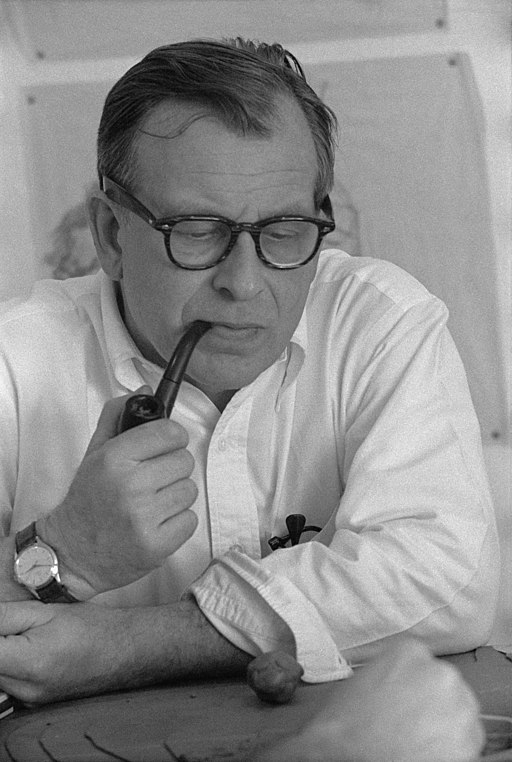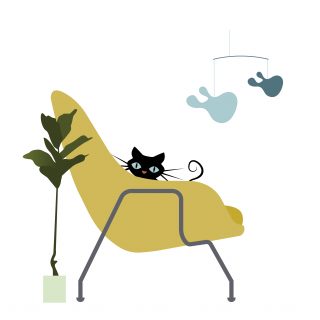Are Womb Chairs Overrated? Inside the 75-Year Obsession

Florence Knoll wanted a chair like a basket full of pillows. That's it. That's the brief she gave Eero Saarinen in 1946, and somehow from this almost childlike request came one of the most sophisticated pieces of furniture engineering of the twentieth century. Saarinen spent two years figuring out how to make fiberglass-reinforced plastic hold a human body in a way that felt like floating. The resulting chair - all 52 pounds of it in its original form - was less furniture and more exoskeleton, a hard shell performing softness through pure geometry.
Today you can buy a Womb chair for anywhere from $600 to $8,000, and the price mostly tells you whether it was made in a North Carolina factory last month or an Italian workshop using Saarinen's original specifications. The fascinating part isn't the price spread - it's that at every price point, the chair still does exactly what Florence asked for. It holds you like you're weightless. The geometry doesn't care about your budget. A well-made reproduction using modern steel frames and CNC-cut shells delivers ninety percent of the experience at ten percent of the cost. This democratization of design would probably thrill Saarinen, who believed good design was a social responsibility, not a luxury good.
The Physics Nobody Mentions
The "overrated" narrative usually comes from people who've never spent three hours in one, reading while a winter storm rattles the windows. They see the Instagram saturation, the endless styled shoots, the reproduction market explosion, and assume it's all hype. But here's what they're missing: the chair works at a molecular level. That 105-degree recline angle Saarinen obsessed over? It redistributes your body weight so perfectly that your spine decompresses without you realizing it. The curved wings that look purely aesthetic? They're acoustic dampeners. You're literally sitting inside a sound baffle that drops ambient noise by 15 decibels. Nobody talks about this because it sounds too technical for a furniture review, but that's exactly why the chair endures - it's solving problems you didn't know you had.
The material innovation behind these chairs goes far beyond the famous fiberglass shell. Saarinen's era saw designers experimenting with everything from cork to aluminum in unexpected ways, reshaping what furniture could be. The Womb chair's fiberglass was just one example of how midcentury designers weaponized industrial materials for domestic comfort.
The reproduction market actually proves the design's genius rather than diluting it. When manufacturers from North Carolina to Shenzhen to Copenhagen all independently decided to reverse-engineer this 1948 chair, they discovered something remarkable: you can't really cheap out on the essential geometry without ruining it. Even the $600 versions maintain Saarinen's proportions religiously. They might use foam instead of down, polyester instead of Hallingdal wool, steel instead of fiberglass, but that sacred curve - the one that makes you feel held without being trapped - that stays intact. It has to. Otherwise it's just an ugly chair that looks like a cartoon speech bubble. Quality reproductions maintain this engineering integrity while making the design accessible at different price points.
Weight Tells the Truth
Original Womb chairs weighed 52 pounds. The frame was a single piece of fiberglass-reinforced plastic, revolutionary for 1948, impossible to fake cheaply even now. Current Knoll productions hover around 48 pounds. Quality reproductions range from 35 to 55 pounds depending on their ambition. The $600 versions? Usually 32 pounds. That missing weight tells you everything - thinner gauge steel, less padding, simplified engineering. But here's the twist: a 35-pound chair made with modern materials science can actually outlast a poorly stored vintage original. Fiberglass from 1962 gets brittle. Steel from 2026 just gets stronger.
The weight correlation breaks down completely once you hit the 40-pound threshold. Above that, you're paying for provenance, not physics. A 42-pound reproduction with quality foam and a welded steel frame delivers identical comfort to a 48-pound original. The extra six pounds in the vintage piece? That's mostly accumulated dust in the fiberglass weave and the spiritual weight of being in MoMA's permanent collection.

The Color Story Everyone Ignores
Saarinen originally specified eight colorways in 1948: Chartreuse, Cardinal Red, Navy, Pearl Grey, Bottle Green, Natural White, Tobacco, and Pumice. That's it. Eight colors for what would become the most photographed chair of the midcentury. The restraint was deliberate - each color was mixed to work with the chair's curves, to either emphasize or soften the shell's sculptural quality. Chartreuse made it look like it was levitating. Navy made it disappear into evening shadows.
Today, you can get a Womb chair in approximately 400 different colors and patterns, which sounds like progress until you realize 390of them make the chair look terrible. The geometry demands solid colors or extremely subtle textures. Put a bold pattern on a Womb chair and it fights the form - suddenly you can't see the shape that makes it work. This is why vintage pieces in original colorways command 40% premiums even with worn fabric. A faded 1958 Cardinal Red sells for more than a pristine 2020 "Sunshine Yellow" because one color was designed for the chair and the other was designed for a mood board.
The Fabric Reality
Original Knoll productions used Alexander Girard fabrics - wool and mohair blends that cost $300 per yard in today's money. These fabrics did two things: they stretched exactly enough to maintain the shell's curve under body weight, and they developed patina rather than pills. A 1960s Womb chair in original fabric looks better at 60 years old than most modern chairs look at six months.
Modern reproductions offer everything from $30-per-yard polyester to $400-per-yard Italian wool. The polyester performs surprisingly well for five years, then suddenly doesn't. The wool keeps improving, developing that subtle sheen that makes vintage pieces glow in photographs. But here's what nobody tells you: the mid-tier fabrics, the $80-$120 per yard blends, hit a sweet spot. They survive pet claws and coffee spills while still breathing like natural fibers. They don't develop the prestige patina of pure wool, but they also don't develop that synthetic shine that screams "office furniture."
Bouclé - everyone wants bouclé right now - transforms the chair completely. The nubby texture adds visual weight that makes the shell appear more substantial. It's also a maintenance nightmare that nobody warns you about. Bouclé on a Womb chair collects everything: dust, hair, existential dread. After two years, it looks like a sheep that's been through therapy. The original smooth wools Saarinen preferred? They shed everything and age like wine.
Living with the Sculpture
The Womb chair occupies 32 square feet of floor space when you factor in the ottoman and circulation room. That's the size of a small bathroom. In a 400-square-foot apartment, it's eight percent of your total living space. These numbers sound insane until you realize the chair replaces a couch, a reading chair, a meditation cushion, and arguably a therapist. Cost per square foot, it's more efficient than a bed.
The chair's presence in a room shifts everything else. It's not democratic furniture - it demands to be the focal point or it looks wrong. Put it in a corner and it seems wounded. Float it in the middle of the room and suddenly you're living in a design museum. The sweet spot: angled between two zones, creating a third space that didn't exist before. This is what Saarinen understood - the chair creates territory, not just seating.
The Market Truth
Vintage originals from the 1950s and 60s trade between $4,000 and $12,000 depending on condition and provenance. Current Knoll productions retail at $6,000-$8,000. High-quality reproductions run $1,200-$3,000. Budget versions start at $600. The fascinating pattern: chairs in the $1,500-$2,500 range hold their value best. They're good enough that owners don't upgrade, but not so precious that they're afraid to use them.
The secondary market reveals something else: Womb chairs rarely show up. The average American changes their sofa every 7.5 years. Womb chair owners keep them for 15-20 years, often passing them to children. The chairs that do hit the market usually come from estates or divorces - major life transitions, not casual redecorating. This ownership pattern exists across all price points. Even the $600 reproduction owners hold onto them like heirlooms.
Why It's Not Overrated
The Womb chair endures because it's honest furniture. It does exactly one thing - holds a human body in comfort - and does it better than almost anything designed since. It doesn't pretend to be a system or a lifestyle or a philosophy. It's a chair that makes you feel held, available now at every price point for anyone who values that feeling.
The overrated argument assumes design excellence should be rare, that democratization diminishes value. But Saarinen would probably love that someone making $40,000 a year can save up for three months and own a faithful reproduction of his masterpiece. The chair was always about the human need for comfort and refuge, not the human need for status. The fact that it delivers both is just good design doing what good design does - solving multiple problems with one honest solution.
Call it overrated if you want. But seventy-five years later, we're still making pilgrimages to sit in fiberglass shells shaped like wombs, still paying whatever we can afford for the privilege of feeling held without being trapped. That's not hype. That's a design that understood something essential about being human, something that hasn't changed since Florence Knoll asked for a basket full of pillows.